It was the Spring of 2015. If you know where I am local and the weather therein, italicized Spring should be self explanatory. Teaching responsibilities for the academic year 2014-15 had long been wrapped up, and the preparations for the then upcoming Cellcom Green Bay Half Marathon were about being wrapped up too. With qualifying for and participating in Boston Marathon being far too distant and far too difficult to even dream about (sub 3:10:00 finish, 7:15 min/mile or faster) and with over a dozen half marathons in the rear view mirror, I started doing some literature search (read: google-ing around) for Boston’s equivalent of half marathons: a race that didn’t just let me in for fun but expected a little more by requiring qualifying standards in spite of having to pay the registration fee. Several days and many combinations of keywords and phrases later, Google led me to exactly what I was looking for: Race Raves‘ article on an inaugural qualifiers only half marathon event … in November … in San Diego!
I read through the article, and though the qualifying time for my age bracket [sub 1:55:00 (8:47 min/mile or faster)] was nearly four minutes better than my then personal best and over six minutes better than the best effort in 2015 for this distance, it somehow seemed within reach. Initial plan was to not rush the pace and wait till the Baraga County Lake Trout Festival a month later to get the qualifying time. But the event (i.e., the one in San Diego) came with a cap of 5,000 participants — on a first earned, first served basis. The fear of missing out on being a part of the inaugural USA Half Marathon Invitational made it an easier decision to try my hardest to earn the qualifying time in Green Bay. Much of all I needed to go well did go well in Green Bay and I did get it in with nearly two minutes to spare.
SC15 in Austin, TX
Running around and in between the shadows of Madison Marathon and the festivities of annual SC conference (i.e., Easter, Halloween, Thanksgiving, Christmas, Homecoming … all bundled into one event … in a candy store like atmosphere; and getting to Austin, TX, via a six hour drive to Milwaukee, WI) meant that there was little time to completely recover from one event, put in enough training miles in between and get ready for the next race.
Timing of SC15 made it a real blessing in disguise: the bootcamp-like schedule forced me to eat and sleep on time; the vast expanse of the convention center meant that there was plenty of walking around (low impact, low heart rate, cross training?); a combination of the two and the tasks at hand (learn, share, meet people, and learn more …) ensured my mind was mostly off the upcoming race. In a nutshell, SC15 was just as overwhelming as any of the previous four editions I have attended but was by far the most humbling one: meeting people and listening to their stories — of struggles, of serendipitous opportunities, of lack of (a or an nth second) chance to do something, of price they paid and sacrifices they made to eventually get to where there are now, of needing to be grateful for having gone a step or two further than many and of using that as a responsibility to do more, and of how it all seems worthwhile in the rear view mirror from where they are now.
Memories of Madison Marathon and how lack of the long runs played a vital role in it being a less than satisfactory performance made sure I did do at least one such long run prior to this event. Dear friend from my very first year at Michigan Tech (and more importantly, one of the two that took me out to my very first softball practice, and a member of the legendary Team Fiziks that went onto win 116 of its next 128 games and five league championships spanning 11 years), Nathan Erickson, not only looked me up but offered to take me along for a long run with AustinFit. Saturday long run with Nathan, Brooke and many more from the AustinFit program took me around the Colorado River (yes, Texas has a Colorado River; no, it’s not the same as the one that cuts through the Grand Canyon in Arizona) and introduced me to the local trail system to run on my own — should I be able to find or make time. Dr. Curt Hillegas, who was kind enough to let me tag along for a couple runs in Arlington (Virginia) a few weeks ago during the Fall CASC meeting, was kind enough to share a quick cure for mid-race cramps. However, with everything that was happening in SC15 and outside of it, I didn’t make any time to run more than just once more, and did not get to try out Curt’s suggestion before the race. Closest I came to any organized physical sporting activity was playing frisbee and catch in (yes, in) the home of Texas Longhorns during the Technical Program Reception.
| Summary of training activities since the last race | ||
| # | Date and time | Activity details Device, Distance, Time, Pace, Speed, Heart Rate, kCal, and Weather Notes (when applicable) |
| 01 | 2015-11-11 6:01 pm | KRG Weekly Run 2015 #43 3.20 mi, 0:31:50, 9:57 min/mile, 6.03 mph, 157 bpm, 365 45 F, 6 mph NW, felt like 43 F, 76% humidity; cloudy and pleasant |
| 02 | 2015-11-14 8:03 am | Austin Short Run 9.10 mi, 1:32:27, 10:10 min/mile, 5.90 mph, 152 bpm, 954 55 F, 4 mph, felt like 55 F, 58% humidity; cloudy and pleasant |
| 03 | 2015-11-19 8:00 am | Austin Quick Run 3.22 mi, 0:24:58, 7:45 min/mile, 7.74 mph, 174 bpm, 345 46 F, 0 mph, felt like 46 F, 87% humidity; clear, humid but pleasant |
| 04 | 2015-11-20 7:40 pm | San Diego Quick Run 3.33 mi, 0:30:13, 9:04 min/mile, 6.62 mph, 165 bpm, 376 70 F, 0 mph, felt like 70 F, 73% humidity; clear, humid but pleasant |
San Diego, CA
The Southwest flight from Austin, TX, to San Diego, CA, was on time and uneventful. Watching three parts of a documentary en route, 100 Miles From Nowhere, helped put a lot of things into a better perspective (read: taught me to suck it up) the next day. Flight crew went beyond the normal call of duty and concocted a less sugary drink for me on their own upon learning that I was heading to San Diego for a race. First experience in America’s Finest City, however, wasn’t all that memorable as the cab driver took me to a wrong hotel — without understanding or asking for clarification of my destination. The city/region was also going through a heat wave relative to its seasonal and recent weather conditions forcing me to stay inside the hotel on Friday afternoon and evening except for (a) two outings for lunch and dinner, (b) pre-race expo to pick up the bib, and (c) a quick easy paced jog around the San Diego river.
Pre-race expo was well staffed and organized but the number of sports-related outlets was underwhelming. Lack of gear check changed my plans for race day to some extent: I had to carry the cellphone with me for, without it, I would have no easy way of getting back to the hotel after the race. A more important change came from a serendipitous chat with one kind gentleman named David Levine (head coach at the Los Angeles based USA Marathon Training and an author of The Complete Idiot’s Guide to Marathon Training — I would learn many hours later). He was watching the pace group booth and when my turn came, I explained to him what I had done recently, what my best effort was for this distance, what I thought was capable of doing the next day, how I thought I was going to approach, and asked if he had any thoughts or suggestions that would help me get the goal.
David didn’t act or speak arrogantly or brush me off or give me a canned response. Instead, he patiently listened, thought for a few moments and started working backwards from the goal time. His approach and suggestion for this race (start slow, hold the slow pace through one half a mile past the three mile mark, and then use the terrain to your advantage and pick up the pace) was in stark contrast to my usual plan of start out faster than intended pace, use the banked minutes in the middle miles and push through the last few miles at race pace. Even though I had no clue of who he was or what he had accomplished, he looked like he knew what he was talking about and his tone or body language seemed like he wasn’t the kind of person to lead people astray. So, I decided to discard my plan and trust his for this race.
The race day morning came at a very reasonable pace and after a nearly full night of good sleep. Not knowing the details of street closures and the availability of cab rides, I opted to be at the start area around 4:30 am. The ride from the hotel left me with a completely unsolicited yet very timely piece of advice (a sign of unconditional love for a random stranger?) from the elderly Uber lady that would go on to serve me well. And in hindsight, the event also provided a fantastic opportunity to take a couple more baby steps in a couple of things I have been working to improve in recent times: the act/art of letting things go and keep the very want of doing something from becoming so heavy a weight that it becomes an unnecessary obstacle.
Son, when we don’t do things, often it’s not because we couldn’t do it but because we didn’t want to do it or we were too lazy to put out our best. And, if you don’t get your goal today, you’ll have no one but yourself to blame for the rest of your life. Today doesn’t come tomorrow.
The event started on time, at 6 am, after a beautiful rendition of The Star Spangled Banner. With temperature already at 55 F and rising like a helium balloon, carrying my own hydration pack turned out to be a really good idea. Scrapping my race day plan and sticking with David Levine’s turned out be an even better idea. I started with the 1:40 pace group but I let them go within the first mile. Just like David had explained and suggested, I held the pace back through the first 3.75 miles. Just when the grand descent (please see the elevation profile below) began, I got a little too desperate for a PR and started doing all sorts of mathematics in my head to estimate the desired pace, etc. I did so much of it that the 1:45 pace group was right on my heels and with it was the feeling of Déjà vu from Madison Marathon a fortnight ago.
|
Goal vs Reality
Goal: 13.11 mi in 1:44:05 (7:56 min/mi) Reality: 13.14 mi in 1:43:02.0 (7:50 min/mi) |
|||||||
| Distance mi |
Lap Time m:ss |
Lap Elevation feet |
Total Time h:mm:ss |
Total Elevation feet |
Avg Pace min/mile |
Projected Finish Time h:mm:ss |
Differential Goal Time h:mm:ss |
| 1.00 | 8:02 | 67↑ 32↓ | 0:08:02 | 67↑ 32↓ | 8:01 | 1:45:06 | 0:01:01 |
| 2.00 | 8:20 | 131↑ 0↓ | 0:16:22 | 198↑ 32↓ | 8:11 | 1:47:16 | 0:03:11 |
| 3.00 | 8:09 | 79↑ 32↓ | 0:24:31 | 277↑ 64↓ | 8:10 | 1:47:04 | 0:02:59 |
| 4.00 | 7:59 | 46↑ 27↓ | 0:32:30 | 323↑ 91↓ | 8:07 | 1:46:24 | 0:02:19 |
| 5.00 | 7:38 | 0↑ 32↓ | 0:40:08 | 323↑ 123↓ | 8:01 | 1:45:06 | 0:01:01 |
| 6.00 | 7:14 | 0↑ 153↓ | 0:47:22 | 323↑ 276↓ | 7:53 | 1:43:21 | 0:00:44 |
| 7.00 | 7:22 | 31↑ 132↓ | 0:54:44 | 354↑ 408↓ | 7:49 | 1:42:28 | 0:01:37 |
| 8.00 | 7:42 | 0↑ 10↓ | 1:02:26 | 354↑ 418↓ | 7:48 | 1:42:15 | 0:01:50 |
| 9.00 | 7:47 | 0↑ 0↓ | 1:10:13 | 354↑ 418↓ | 7:48 | 1:42:15 | 0:01:50 |
| 10.00 | 7:59 | 0↑ 0↓ | 1:18:12 | 354↑ 418↓ | 7:49 | 1:42:28 | 0:01:37 |
| 11.00 | 8:03 | 10↑ 0↓ | 1:26:15 | 364↑ 418↓ | 7:50 | 1:42:42 | 0:01:23 |
| 12.00 | 8:00 | 0↑ 10↓ | 1:34:15 | 364↑ 428↓ | 7:51 | 1:42:54 | 0:01:11 |
| 13.00 | 7:52 | 0↑ 0↓ | 1:42:07 | 364↑ 428↓ | 7:51 | 1:42:54 | 0:01:11 |
| 13.14 | 0:59 | 0↑ 0↓ | 1:43:06 | 364↑ 428↓ | 7:50 | 1:42:42 | 0:01:23 |
| The final cumulative time, 1:43:06, may not match the official time (1:43:02.0) owing to rounding errors. Starting my watch a few seconds before the start and stopping it a few seconds after crossing the finish line can be an additional reason for this discrepancy. The overall distance, 13.14 mi, may not match the designated (or certified) event distance (13.11 mi) owing to idiosyncrasies associated with GPS data collection OR my inability to take the tangents OR the aforementioned early start/late stop reasons, and in some rare cases, incorrectly measured (or advertised) courses or DNFs. As a result, the cumulative pace and the projected finish time might not match the official values as well. | |||||||
I dropped the mental mathematics and started just focusing on the task at hand but apparently letting it (i.e., the mathematics) go was harder than necessary. I thought I had picked up the pace enough but lo and behold, the 1:45 pace group was on my heels yet again with the same Déjà vu feeling. It was some combination of David’s suggested plan from the day before, Uber lady’s unconditionally loving advice from morning and the fear of failure that eventually helped me drop the mental gymnastics for good and focus on just running the mile I was in.
Apart from the weight of sweat drenched outfits, rest of the run was relatively very free. In a serendipitous fashion, parts of the course resembled much of the lone long and short runs in Austin: a combination of asphalt and hard packed trail. There was a hint of cramps in the upper right leg but went away just quickly as it showed up, and didn’t get a chance to try Curt’s cure for such cramps. With a new PR well within reach and with temperature rising, I didn’t want any injury or otherwise get a DNF. So, I held back a little again over the last three miles (the splits analysis table below, along with the elevation profile, provides the evidence) and even chose to not do the usual sprint finish at the very end. When I hit the stop button on my Garmin, I had a 1:43:02 finish — good for a new PR by about a minute — and was fairly happy and still be able to easily walk around the finish area.
| Personal goals for the event (in order of importance) | ||
| ## | Goal | Result |
| 01 | Improve current PR for half marathon: 1:44:05 (7:57 min/mile, 7.55 mph) | Yes, 1:43:02 (7:50 min/mile, 7.66 mph) |
| 02 | Finish in the top 50% overall, amongst males and in age group | Yes; 543/2439, 405/1121, 60/142 |
| 03 | Keep the 2015 average run time for road half marathons under 2:00:00 | Yes, 9:10:20 total and 1:50:04 per event |
After a quick trip to Stone Brewing in Liberty Station, rest of the day was spent hanging out with dear friends — Lisa and Matt (who drove all the way from Phoenix, AZ), and Karis and Michael, and all their little ones in the suburbs of San Diego. A short night of sleep made way for a full day of travel: 6 hours in air from San Diego to Milwaukee via Denver (with a heavenly view of the Grand Canyon thanks to Southwest pilots), and an equal amount of time on the road from Milwaukee to Houghton.
A quick but detailed analysis of the GPX file associated with this event indicated fairly evenly paced splits at (self-proclaimed or self-programmed) checkpoints. It was also the first time, that I remember, where the last 5k had time/pace comparable to the first 5k. Comparing the speed at different checkpoints across all the half marathons in 2015 taught me the value in respecting the terrain, starting slow and picking up the pace in later miles. More importantly, it reinforced the value in having blind faith in the voice of experience — albeit from strangers that I had never met before and might probably never meet again — and following through on their suggestions.
Hidden/Packaged into it all was the first semi-successful set of attempts at letting things go: first, in terms of the plan I had for the race and being able to quickly (and quite literally, overnight) adapt to a plan that I knew nothing about; and second, avoiding unnecessary mental gymnastics during the run. Equally satisfactory finding, with photographical evidence, was the ability to maintain decent physical posture throughout the race.
This event marked the end of 2015 racing season, and I am quite fortunate to have ended it on a happier note with a new PR. Now, onto a couple weeks of rest and letting the body heal before the training for 2016 racing season begins.
Thanks be to
the rejections and opportunities life has brought my way, event folks (organizers, sponsors, volunteers, timers, law enforcement officials, photographers, fellow participants and spectators) and my family of good friends, mentors and coaches in and outside of my community for all the unexpected, undeserved and unrewarded acts of kindness and constant encouragement as well as offerings of constructive criticism to improve myself as a human and an athlete. I am eternally grateful to all those who let me train with them, who shared their meals and experiences with me, who helped keep me in good health, who helped me stay the course, and who cheered me on from home or along the course.

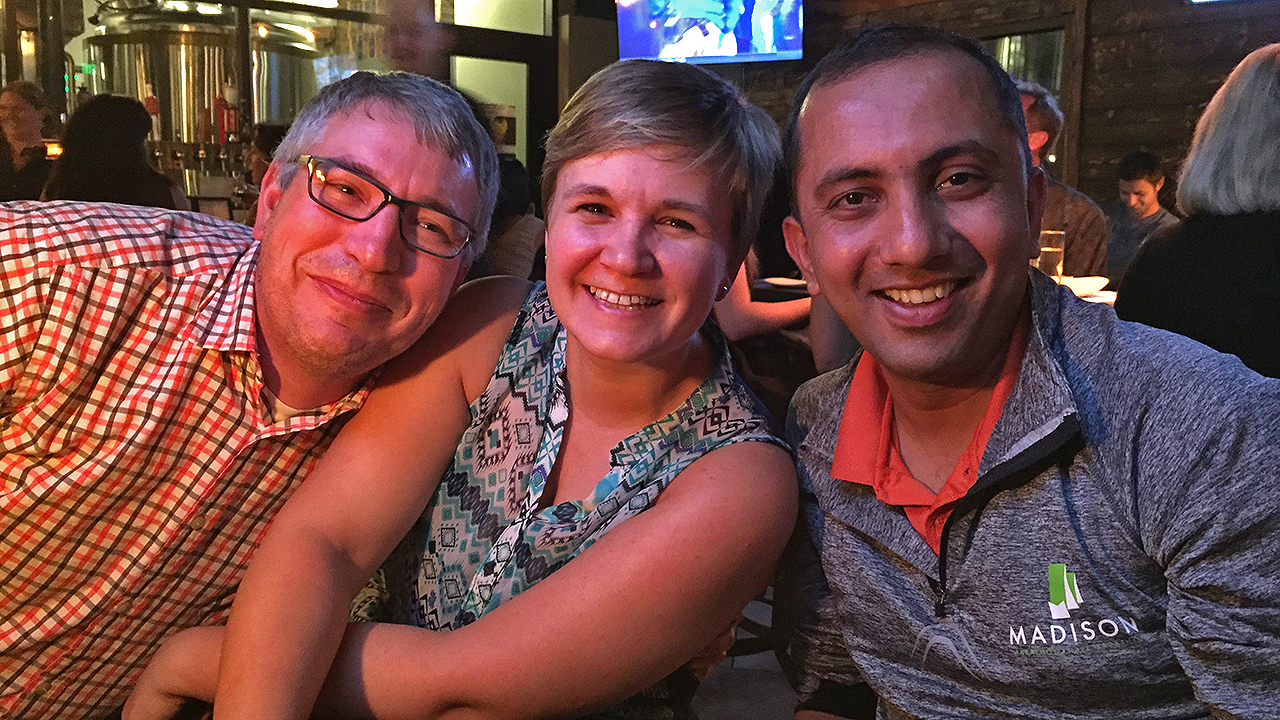
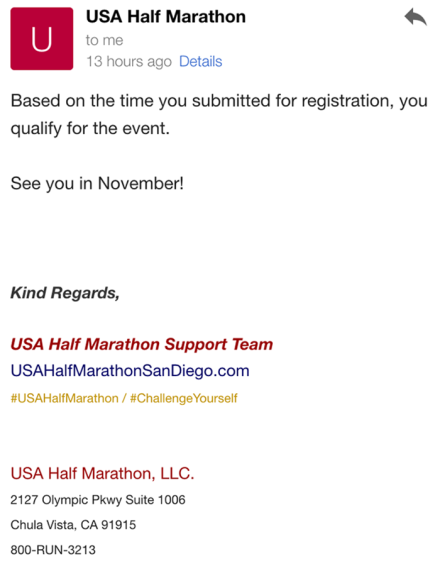




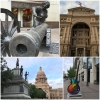
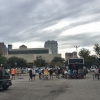

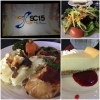
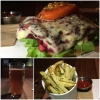


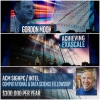
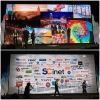
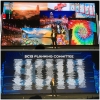
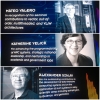
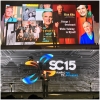
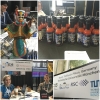
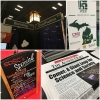
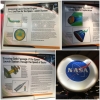
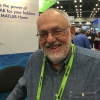
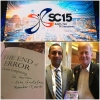

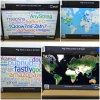


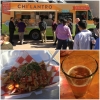
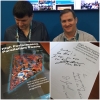



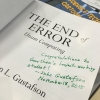
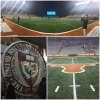
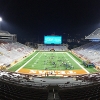
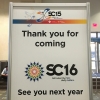
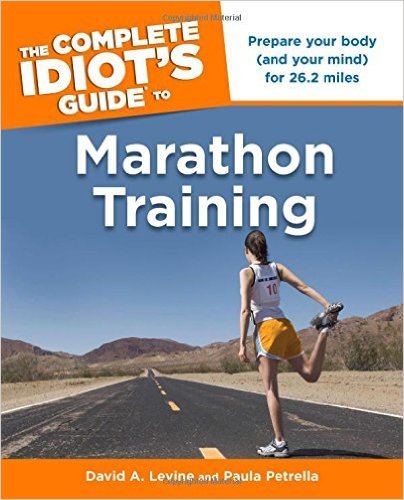
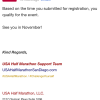
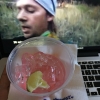
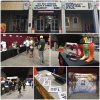
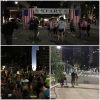
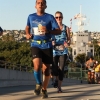
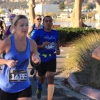
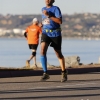
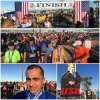
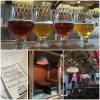
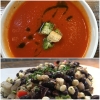
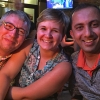
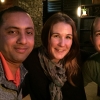
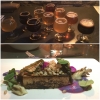
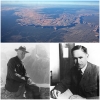

3 Replies to “2015: USA Half Marathon”